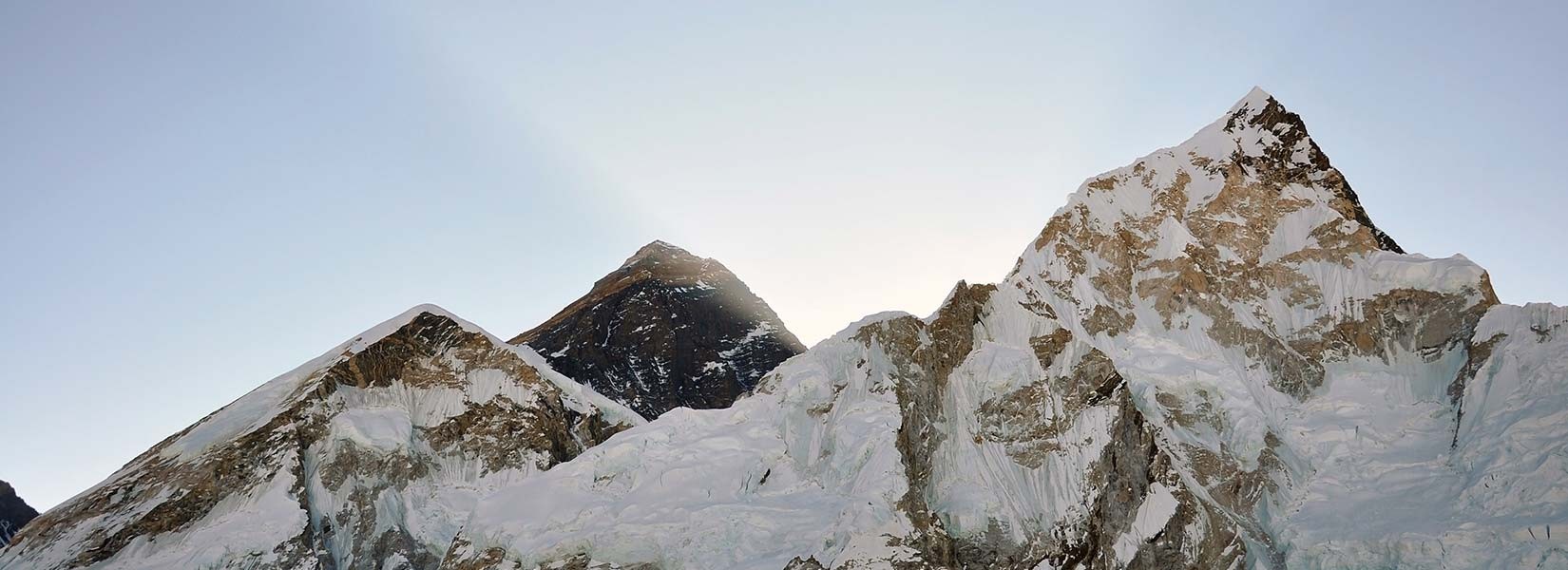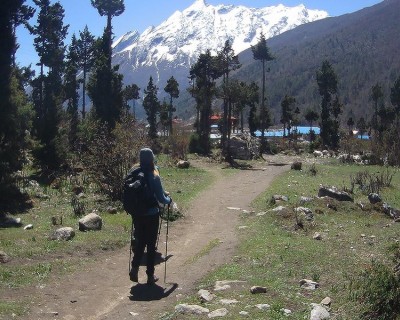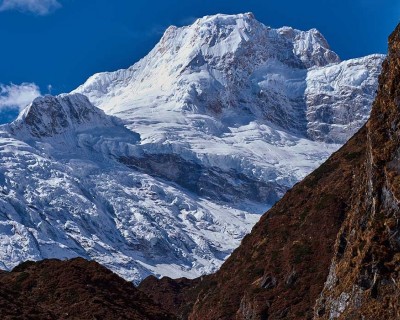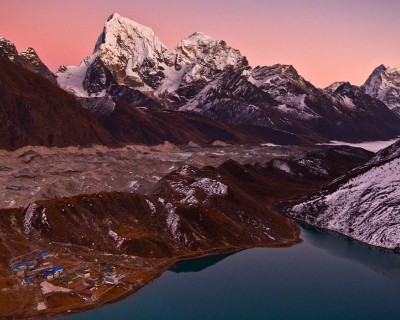Why’s Spring Considered The Best Season To Trek the EBC?
Seasonal Considerations for Spring Trekking
The Spring season, from March to May, is the best time to trek to Everest Base Camp. Mostly because you will have mild, stable weather conditions during the trek, which makes this high altitude more comfortable and manageable than it would otherwise.
Daytime temperatures during the Everest Base Camp trek in spring in lower elevations of Khumbu Valley are between 10 to 15°C (50 and 59°F). The temperature, as you go higher gets colder, resulting in a refreshing chill, rather than the bone-chilling cold of winter. The climate enables you to bustle along the trails without carrying heavy additional gear to deal with cold weather or the unfavorable rain of monsoon.
Spring weather in the Himalayas is well known to be stable and predictable. During this season, we will rarely be seeing those sudden severe storms, which minimizes the risks and challenges that could have been faced. We can fully concentrate on the sheer awesomeness of the scenery as well as the physical demands of the trek instead of the fear of unpredictable and dangerous weather.
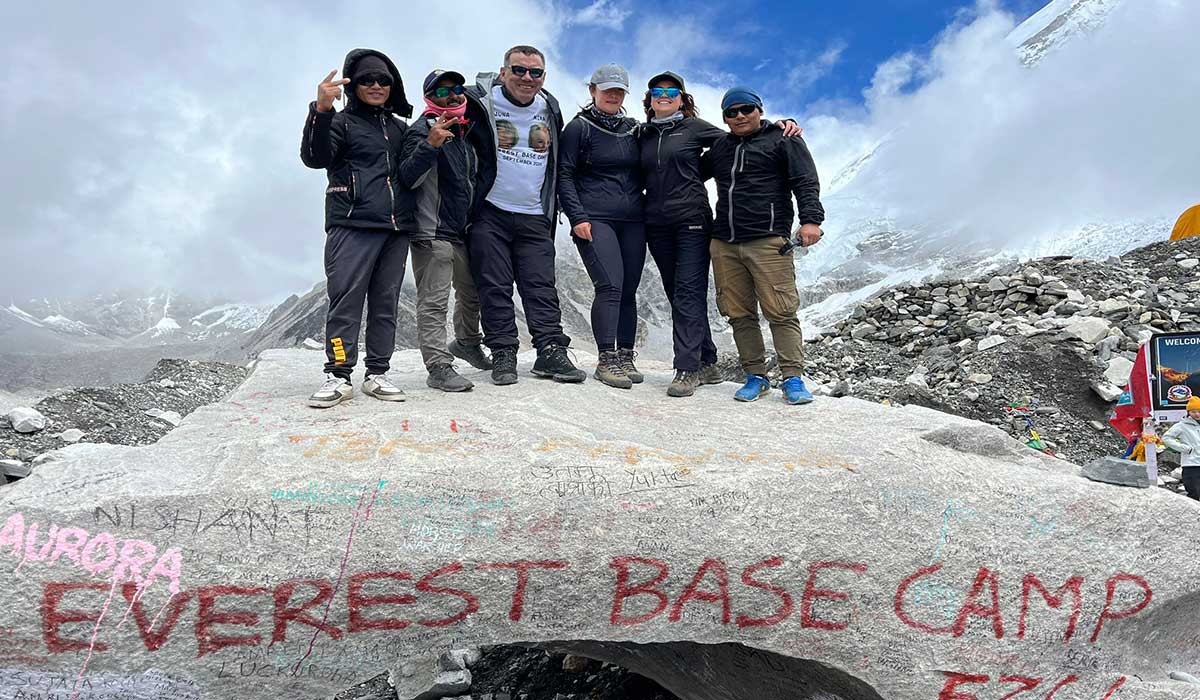
Picturesque Scenery and Wildlife
Post winter, when snow and ice melt away, the route to the Everest Base Camp trek is turned into a world of rich colors and lush vegetation. Hillsides are covered with blooming rhododendrons, spilling the valleys with an amazing palette of reds, pinks, and whites, contrasting against the snow-covered peaks.
Spring, being the best visibility time for Himalayan icon peaks, we get to see tall peaks such as Mount Everest, Nuptse, and Lhotse. The plentiful clear skies throughout the day allow us to appreciate these giant mountains, especially at sunrise and sunset when they are illuminated in golden and pink hues. The spring season is the most fabulous time to visit here, as this makes famous viewpoints like Kala Patthar especially beautiful as well.
The flowers and the trails, from towering pine trees to lovely mountain wildflowers, during the Everest Base Camp trek in spring are all blooming freshly with greenery. This lush greenery heightens the beauty of the scenery on the trek, and also with a break from the stark, wintry landscapes, you can find in the colder months.
If any of you are a wildlife enthusiast, you should consider springtime for the trip as it is a good time for seeing Himalayan fauna along the route. Once the weather begins to warm, animals emerge from winter hideaways that will enable you to glimpse iconic Himalayan tahr, Impeyan pheasants, and snow leopards.
Cultural Experiences and Sherpa Connections
Everest Base Camp trek during spring allows you to step into the rich cultural heritage of the Khumbu region. As it is the peak season for the trek, you will find fully operational infrastructures ready for accommodation.
Along the trail, you'll find well-stocked and staffed tea houses with comfortable beds and hearty, locally sourced meals. Experienced local guides and porters will share their expertise and assist you with a smooth, amazing experience.
Spring is also a time of festivals in the Khumbu Valley, in which locals celebrate Buddha Jayanti, honoring the birth of Buddha. You can view these cultural activities firsthand, letting you gain more understanding and appreciation of the culture and traditions of the Sherpa people.
Traveling through ancient monasteries, prayer flag-adorned bridges, and traditional villages, you will feel the root of that spirituality that was tied into the making of this amazing landscape for centuries. This immersive experience adds essential insights and significance to your Everest Base Camp trek during the spring season.
Everest Base Camp Trek in Spring | Nature, Culture, and Adventure Junction
Spring, which is from March to May, is one of the best times of the year to do Everest Base Camp trek (EBC). Trekking to EBC in Spring, comprises a great awakening of nature, pleasant temperatures, blooming flowers, clear skies, and brilliant cultural celebrations. Let’s see what cultural events, flora and fauna, and each month’s highlight.
March, Early Spring
March signals the start of the trekkingseason, weather is still cool in the daytime averaging 10°C to 15°C (50°F to 59°F) and -5°C to 0°C (23°F to 32°F) at night. You get a feel of crisp and dry air, while also having clear skies to view the amazing peaks covered in snow.
Floristically, the lower elevations feature blooming early, with alpine mosses, lichens, and small shrubs. The rhododendrons are still in bud waiting to bloom in coming weeks but the famous Juniper bushes begin to appear higher up.
The Himalayan Wildlife is best spotted in March when animals descend from higher altitudes in search of food. In the forested areas you will spot the Himalayan Monal, Nepal's national bird with its striking plumage, and also the Himalayan Tahr which is a wild goat with a reddish coat, grazing on the slopes. Along the trail, you can also get to see yaks, an essential part of Sherpa's life.
Compared with other months, March carries some festivals such as Holi (Fagu Purnima), the festival of colors that celebrates the arrival of Spring, and Maha Shivaratri, a Hindu festival worshipping Lord Shiva. You might also see the Losar (Tibetan New Year) celebrations for which there are dances, music, and feasting.
April, Peak Bloom
In April, Everest base camp temperature warms up and becomes more stable, ranging from 15°C to 20°C (59°F to 68°F) during the day, and around -5°C to 0°C (23°F to 32°F) at night. You get clear skies and dry conditions, meaning it’s a great time to hike the trails.
At this time, the landscape truly comes alive. Hillsides are lively with rhododendrons, Nepal's national flower, blooming in brilliant reds, pinks, and whites. At higher elevations, Juniper trees thrive and alpine plants like blue poppies, primulas, and buttercups begin to bloom making colorful patches on the rock slopes.
During this month, you have plenty of chances to spot wildlife like Himalayan Monal, grazing yaks, and Himalayan Tahr. If you are lucky, there is a chance you will even see the rare snow leopard in the higher reaches.
In April, cultural events include the Dumje Festival, a four-day celebration of Guru Rinpoche'sbirth, and Sagarmatha Day, a celebration of Mount Everest (Sagarmatha), with prayers, flag hoisting, and cultural performances. The Nepali New Year (Navavarsha) and Chaite Dashain, a mini version of the Dashain festival, also add to the festive atmosphere.
May, Pre-Monsoon Glory
Everest Base Camp temperature in May, is the warmest, with daytime highs ranging from 14°C to 22°C (57°F to 72°F), and nighttime lows down to -5°C to 0°C (23°F to 32°F). The dry weather with clear skies, gives you wide and sweeping views of the surrounding peaks.
Spring bloom is at its peak during May, as lush greenery is spread throughout the region. You will see the fading rhododendrons at this time, but the lower altitudes are still dense with wildflowers. On the higher trails, the juniper trees still thrive, and the alpine meadows change to primulas, buttercups, and other hardy plants.
Wildlife sightings will increase as temperatures warm. You can see yaks and Himalayan Tahr grazing in the meadows, the Himalayan Griffon vulture soaring above, and golden eagles hunting for their prey. If you are fortunate enough, you can even see the snow leopard in the higher regions.
May is also a month for celebrating cultures such as Buddha Jayanti, the celebration of the birth, enlightenment, and death of Lord Buddha, and the Sagarmatha Festival, where prayers and cultural dances are performed to honor Mount Everest. Another festival continuing the May month is the Dumje Festival, which honors Guru Rinpoche through traditional dances and prayers.

Navigating Spring Crowds on the Trail | Spring Trekking Challenges and Solutions
Even though Spring is one of the most popular times for trekking the Everest region, you still want to consider the challenges it has. The weather around this time is perfect, but you’re not the only one wanting to see the beauty of Everest. Other trekkers are attracted as well, causing quite a lot of trekkers to be on the trail.
The increased number of trekkers results in famous spots like Namche Bazaar (Everest Region) being crowded, especially the tea houses. To secure a place to stay you need to book accommodations early. Book your date, and we'll send you the link managing all your accommodation and stuff.
One way you could avoid getting tangled in the crowds is by starting your day early. You will avoid the bulk of trekkers, while also finding peaceful trails and better hiking conditions. We suggest you do not procrastinate if you want to get a good room when fewer people are at the tea houses. Early mornings will give you a better view with clearer skies and reduce the risk of afternoon rain, which is common during spring.
Speaking of weather, rain showers and temperature fluctuations can be seen during spring in the Everest region. We recommend you bring important waterproof gear, like a jacket, pants, and a pack cover. If you want to stay dry and comfortable, those gears will help prepare you against sudden rain or changes in temperature.
Besides the weather, there are other things to keep an eye out too. Altitude Sickness (AMS) is another hassle in spring. While climbing to high altitude, the air gets thinner, and AMS can catch you by surprise.
You would rather take the ascent slowly, drink plenty of water, and acclimatize by stopping in places like Namche Bazaar and Dingboche instead of getting hit by AMS. If you take it slowly, and ease into the altitude, with rest days, you’ll be able to adjust and have the best defense against AMS.
Best Photography and Viewing Spots in Spring
If you are a photographer, the Everest Base Camp trek in Spring would be a paradise, with rhododendrons blooming all colorful, the skies clear and the mountains dramatic. If you are at Kala Patthar, situated just above Gorak Shep, you can get a great shot of Mount Everest.
Both sunrise and sunset views from here are perfect, with a beautiful golden glow over the tall peaks. It’s that sort of moment that you’ll never forget and make the camera continue clicking.
Next up, we would not be skipping Tengboche Monastery, as it is a spiritual and scenic highlight. We get to see amazing views of Ama Dablam, one of the area's most photographed mountains. The colorful prayer flags of the monastery and peaceful atmosphere, allow us for some beautiful shots to be made.
Namche Bazaar is another great spot for photo opportunities, it is a popular town surrounded by towering peaks. From here we get a wide-sweeping shot of Everest, Lhotse, and Ama Dablam. Near the Everest View Hotel, the views from Syangboche are also pretty for sweeping shots of Himalayan giants in the distance.
Moving higher up, we reach Dingboche, a perfect location to photograph peaks like Cholatse and Taboche, with the valley in the foreground. At Pangboche we get a breezier and peaceful shot of Ama Dablam. Lastly, Everest Base Camp itself is the ultimate photography destination. It’s a place every photographer should visit, whether you’re capturing the camp’s atmosphere or the snow-covered peaks soaring overhead.
Time your trek to make the most of your shots, especially if you can time it to catch the golden hour. The gentle light during these times will bring out the colors of the landscape and will do magic for your photos.
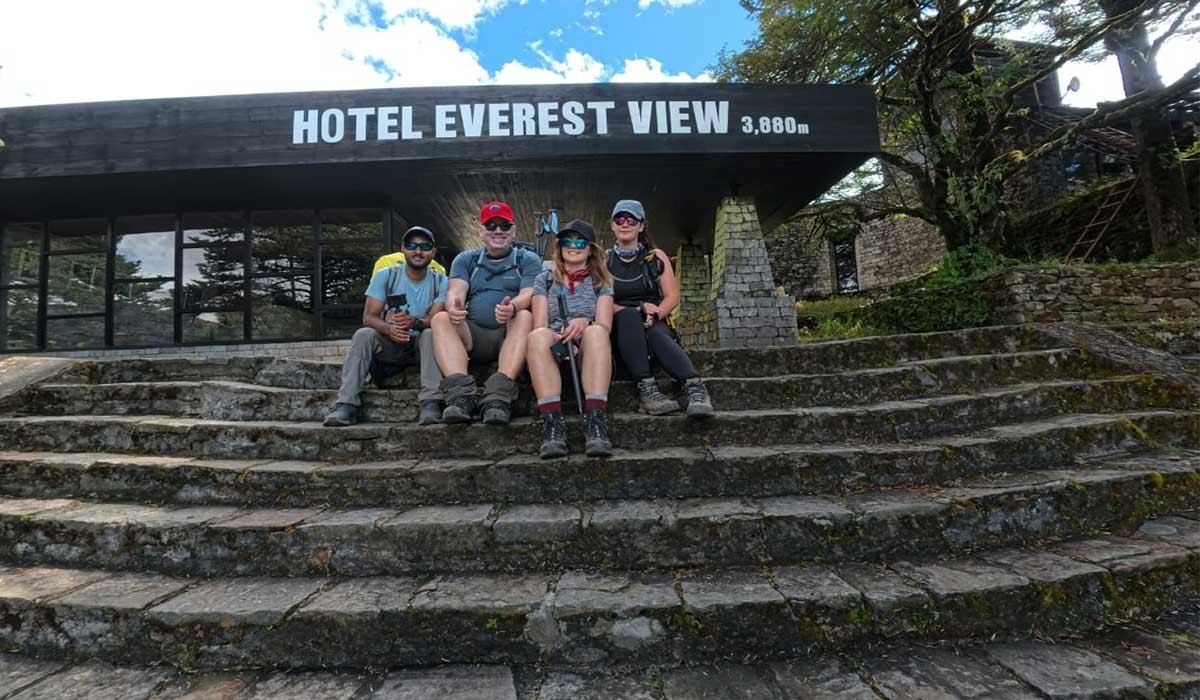
Health and Safety | Fitness and Acclimatization
Just loving adventures won’t get us to accomplish Everest Base Camp trek in spring, you need to be physically fit, carefully plan, and understand the risk of high altitude trekking. For beginners, you want to be cardiovascularly fit. Involving in long days of trekking, most of the time at an incline can take a huge toll on your stamina. Try to prepare beforehand with exercises that improve stamina, such as running, cycling, and hiking on inclines.
Being fit alone won’t be enough. The more altitude you gain, the less oxygen there will be. Reaching very high altitude is when altitude sickness (AMS) becomes a concern. AMS often starts when you are above 2,500 meters and usually can affect the trekkers who haven't acclimatized properly.
Headaches, dizziness, nausea, and fatigue are some of the symptoms. When you begin to feel any of these symptoms, it is important to stop and rest. The best way to avoid AMS is by taking it slow and having proper acclimatizationdays,especially in Namche Bazaar (3,440m) and Dingboche (4,410m).
Acclimatization is when you give your body time to get used to the higher level of altitude. Climb high, sleep low is a popular rule. It means to trek up to higher altitudes during the day, but going down to lower altitudes when you sleep at night. This way your body will accommodate slowly to the decreasing oxygen levels without overexerting.
If AMS symptoms don’t get better, we suggest you descend to a lower altitude or take Diamox for effective recovery. AMS can become more serious in rare cases, progressing to High Altitude Pulmonary Edema (HAPE) or High Altitude Cerebral Edema (HACE), both of which can be life threatening.
These conditions result in fluid building up in the lungs or brain, making symptoms worse, and causing confusion, trouble breathing, and unconsciousness. You will need to immediately descend and get medical attention if any of these occur.
Mind that acclimatization doesn’t entail just resting in one spot, it’s about listening to your body and being ahead of any symptoms. So, bring lots of water, don’t overexert yourself, and don’t go beyond your capabilities neglecting the warning signs.
Tip: Climb High, Sleep Low
Eco-Friendly Trekking Practices in Spring
Since an increasing number of trekkers visit the Everest region, it becomes critical to protect the environment and avoid leaving a negative impact. We follow the Leave No Trace principles, most efficient way to minimize our impact on the environment.
For your Everest Base Camp trek in spring, carry a reusable water bottle and use a water filter to purify water from local drinking water stations. This reduces plastic waste, which is a huge problem in the area. As bottled water creates a huge amount of plastic pollution, filtering your own water is not only better for the environment but for sustainability as well.
Supporting sustainable local businesses is also another to reduce your impact. Accommodate in the teahouses using solar power, or participating in some green initiative. Buying local products isn't only helping the economy it also fosters sustainability by reducing the carbon footprint involved in transporting goods.
One of the most important eco-friendly things we can do is get rid of our trash. Wrappers, plastic bags, and other waste result in pollution of the trail. Whatever you bring, even things like food wrappers, toiletries, and used tissues, should be packed to yourself. Washings in streams or rivers require us to bring biodegradable soap. By going eco-friendly with the soap, we won’t contaminate water and it won’t kill local wildlife.
At last, respect for local wildlife is very important. If you are trekking, don’t feed the animals or disturb their natural behavior. Maintaining healthy spaces from wildlife means sustaining their natural habitat and assuring their habitat’s health is an absolute necessity.
FAQ’s
1. What permits do I need for the Everest Base Camp Trek in spring?
Sagarmatha National Park Permit and Khumbu Pasang Lhamu Rural Municipality Permit are the two essential permits. In total, permits for the Everest Base Camp cost around USD 60, Sagarmatha National Park Permit (USD 30), and the Khumbu Pasang Lhamu Rural Municipality (USD 30).
2. Can I trek to Everest Base Camp solo, or do I need a guide?
The Everest Base Camp trek cannot be done solo. Since April 1, 2023, Nepal’s government has banned solo trekking to Everest Base Camp. It is mandatory to have a guide, not only for regulations, but to provide you support, keep you safe, help navigate, and aid in accommodation and permits.
Porters Are also recommended in case you have some heavy load on your back.
3. What should I pack for the Everest Base Camp trek in spring?
It is important to pack smartly during the Everest Base Camp trek, especially in spring when the weather can change quickly. Base layers (moisture-wicking) and an insulating layer (fleece or down jacket) will make you warm.
You'll need a waterproof jacket and pants against rain or snow, and good-quality, comfortable trekking boots together with wool socks to avoid blisters. Pack sunglasses, sunblock, and a hat for sun protection for the higher elevations. Water purification tablets and trekking poles will be useful too, and don’t forget to bring a first aid kit and a headlamp.
4. What physical exercises should I do to be prepared for the trek?
To prepare physically for the trek, begin cardio training by running or cycling, to help improve your stamina and lung capacity. Try simulating the hiking conditions by having a weighted backpack.
Squats, lunges and step-ups will help you to build leg strength, and core exercises (like planks) will improve your balance. For the best results, start training 2 to 3 months before the trek.
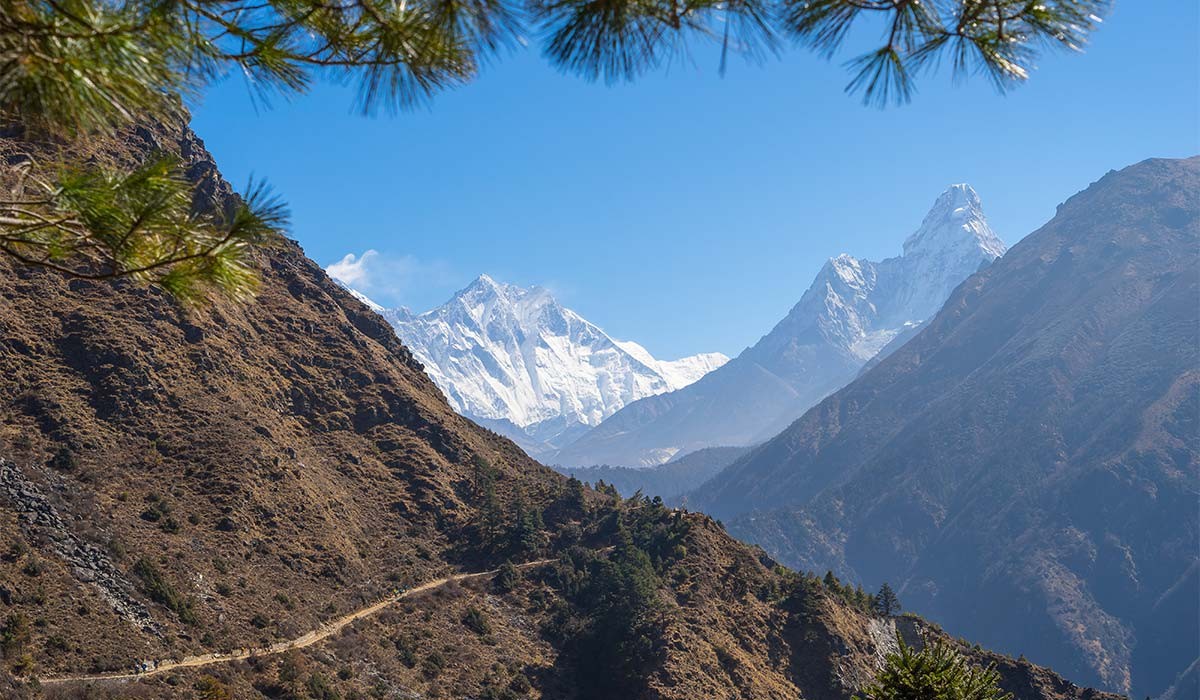
5. What is the estimated cost of Trekking Everest Base Camp in spring?
Prices during the spring season can be slightly higher, because of the demand. In total, the Everest Base Camp cost is between USD 1,200 to USD 1,500 for a basic trek, which includes permits, Lukla flights, guides, porters and accommodation.


